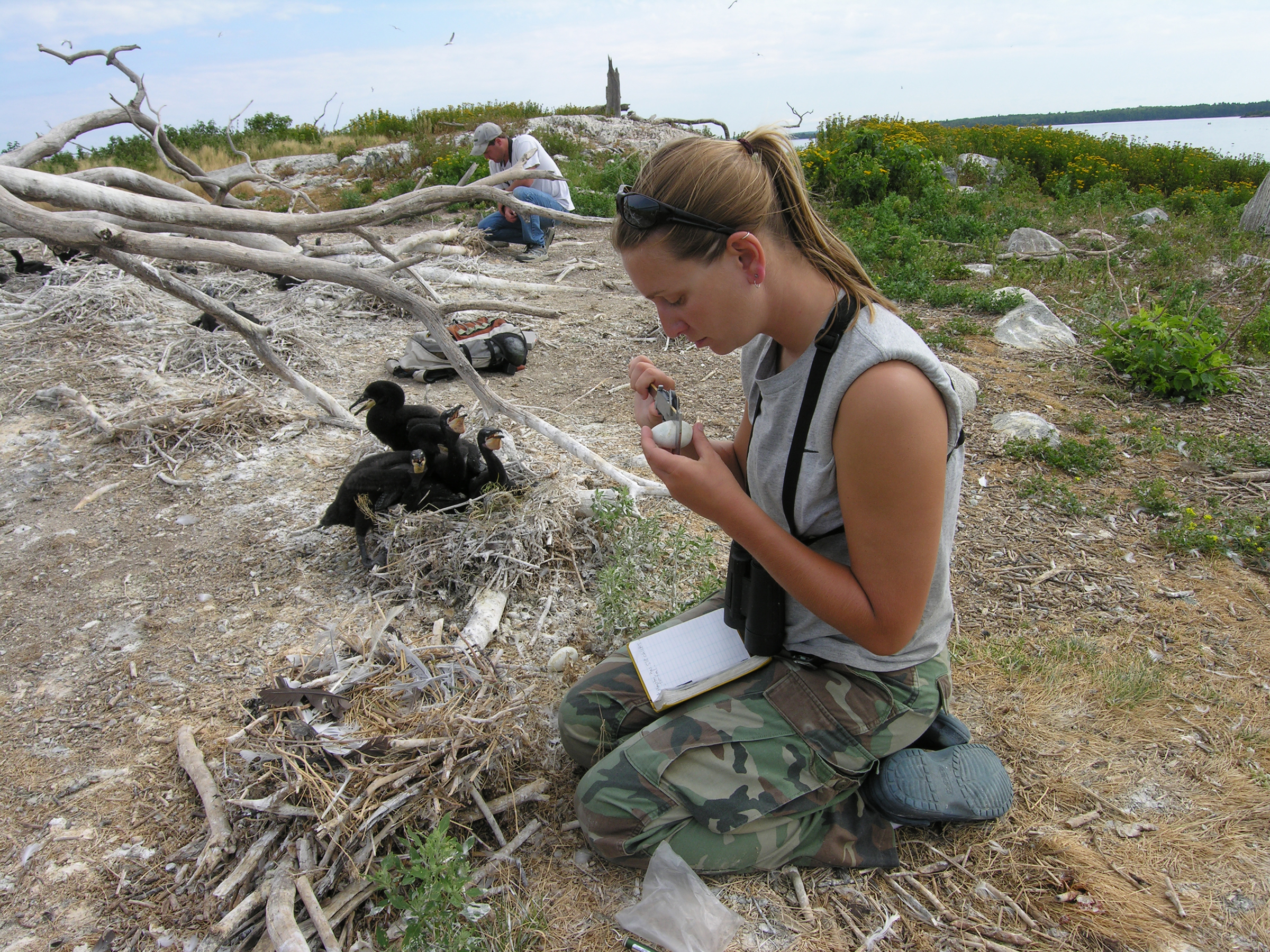Contact: Sammy McDavid

STARKVILLE, MISS.--Nearly 1,500 miles from Mississippi State, student researcher Jennifer Chastant eases her way through nests of double-crested cormorants on a Canadian lake.
After picking out the largest bird, she proceeds to measure, band and record information about the voracious predator, which, in this case, sports a 52-inch wing span. Her work on Lake Woods Island in Kenora, Ontario, is a continuation of research begun more than 20 years ago to determine the impact of cormorants on natural resources, fisheries and aquaculture operations.
After banding the young birds, the wildlife and fisheries graduate student accurately can track their movements and better understand the species' seasonal migration patterns.
"It's my job to examine the entire region from eastern Lake Ontario to Lake of the Woods to develop a more comprehensive overview of the birds," she explained. "By understanding their reproductive rate and migratory patterns, we can develop better computer models to develop strategies that will keep their populations under control."
While accumulating knowledge on habits of the sleek, black fowl is very important to university researchers, it's commercially critical for 370 Mississippi catfish farmers.
Cormorants--whose Latin name means "crow of the sea"--can dive down 60 feet underwater to retrieve food. Researchers in MSU's Forest and Wildlife Research Center estimate they cost the state's catfish growers more than $10 million a year in consumed fingerlings and other young fish.
Nationally, costs associated with bird damage and damage prevention exceeds $25 million a year.
To deal with the wildlife-human conflict, the United States Fish and Wildlife Service issued a depredation order in 1998, authorizing freshwater aquaculture producers in the Southeast to harass or kill cormorants found predating on their fish stocks.
Chastant's two-year research project is being funded by the Berryman Institute, a
research center in MSU's wildlife research center dedicated to resolving human-wildlife conflicts.
An Alpharetta, Ga., native, she is working under the direction of MSU wildlife and fisheries assistant professor Richard Minnis and Tommy King, a U.S. Department of Agriculture, Wildlife Services/National Wildlife Research Center research biologist.
Cormorants, which are related to pelicans, are distinguished by orange pouches and bright blue colorations inside their wide mouths. They also feature distinctive crest feathers that only appear during breeding season. In addition to colorful, colonies can be noisy when making displays to attract mates.
"They're actually hilarious to observe because they're clumsy and stumble around a lot on land," Chastant said.
Now in the second year of her project, Chastant devotes most of her time to tallying bird numbers, measuring eggs, recording banding data, and photographing seasonal changes in their plumage. To determine where they originate north of the border, she works with staff from the Ontario Ministry of Natural Resources, Canadian Wildlife Service and USDA to band some 1,500 cormorants each year.
"When it wasn't raining and foggy, I was out on the island, looking for leg bands and collecting data on the number of eggs in a nest," Chastant recalled recently, with a broad smile.
Specifically, her study enables university and federal biologists to continue tracking where the birds nest, their movements during the breeding season, their preferred wintering grounds, and locations to which their young disperse after reaching maturity.
While officials in Canada are concerned primarily with the birds' impacts to habitat, Chastant said it is along the Mississippi River in the United States where the wildlife-human conflicts become most pronounced. In the South, this means tens of thousands of birds arriving annually to spend the winter feeding on fish stocks in the seemingly countless commercial aquaculture ponds.
So far, she has found that only one or two of three-five eggs found in a nest will survive to migrate south in the fall. This is important to know, she explained, since cormorants "typically don't start breeding until age 3, but continue to reproduce for the next 15 years before reaching a ripe old age of 20."
All in all, that's a lot of birds that will be heading south.
For more information about Mississippi State University, see http://www.msstate.edu/.